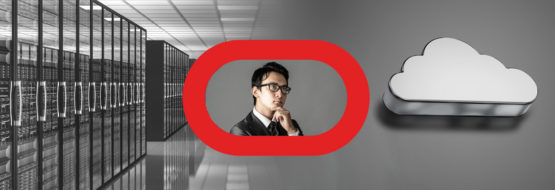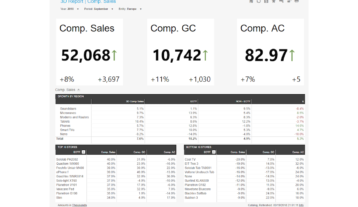Discover Efficient Data Extraction Through Replication With Angles Enterprise for Oracle

When extracting your financial and operational reporting data from a cloud ERP, your enterprise organization needs accurate, cost-efficient, user-friendly insights into that data. However, navigating the large datasets and numerous data sources and systems involved can pose threats to clean data that your reporting teams needs to confidently share actionable insights.
For your operational reporting teams that extract data from an Oracle Cloud Applications (OCA) ERP, choosing the best extraction method hinges on specific reporting needs, objectives, and other factors that include the use case and destination for your data. While real-time extraction is historically faster, your team needs the reliability of the replication process for your cloud data extraction.
The Challenges of Extracting Enterprise Data
Currently, various use cases require data extraction from your OCA ERP, including data warehousing, data harmonization, feeding downstream systems for analytical or operational purposes, leveraging data mining, predictive analysis, and AI-driven or augmented BI disciplines. Enterprise-level organizations like yours often have multiple data sources and systems. Similarly, the tools you use to run your enterprise are becoming increasingly diversified, from different vendors and cloud environments to various ERP systems and BI tools. Add in the de facto requirement to combine all your reporting data and it presents quite a challenge.
As more companies move their data into the cloud, methods for storing and managing that data also adapt and grow. This growth is caused, in part, by the increasing use of cloud platforms for data storage and processing. But it is also a result of the surge in multimedia content in cloud repositories that requires tools and methods for extracting insights from rich, unstructured data formats.
As your organization creates new departments, products, and services, you will see more and more data sources emerge. This evolving landscape means your organization must carefully choose tools and processes that offer the scalability to grow with your business. You need to be able to extract data the right way, with the right tool.
Replication Vs. Real-Time
Should your organization use a replication or real-time method to extract data from your OCA solution? The answer depends on your specific business needs and the nature of the data you are working with. Both methods have advantages and disadvantages:
Replication involves periodically copying data from a source system to a data warehouse or reporting database. This typically occurs on a schedule, such as hourly or daily.
- Advantages:
- Replication reduces the load on source systems because data extraction occurs at predefined intervals, reducing the real-time impact on production systems.
- It provides consistency in data for reporting purposes, as you are working with snapshots of the data at a particular point in time.
- It trends more cost-effective compared to real-time solutions because it requires fewer resources.
- It ensures data consistency and provides a historical data trail, making it ideal for scenarios where maintaining a reliable record of data changes and supporting historical analysis are crucial for your team.
- It reduces overhead and is more resource efficient as its processes involve batch updates at scheduled intervals, alleviating the continuous resource strain and infrastructure demands on your team associated with real-time reporting.
- It is simpler and more predictable. It involves well-defined batch processes, making setup and maintenance straightforward, which can be especially advantageous when simplicity and manageability are prioritized.
- Disadvantages:
- Replication can cause delays in reporting because data is not updated in real time.
- If your business requires up-to-the-minute data, replication may not be suitable.
Real-time data extraction involves continuously streaming or synchronizing data from source systems to your reporting system, ensuring that your reports are always based on the latest information.
- Advantages:
- Real-time reporting provides the most current data, which is crucial for businesses that require up-to-the-minute insights and decision-making.
- It is suitable for scenarios where immediate action or monitoring is essential, such as fraud detection or stock trading.
- It excels in situations where immediate access to data for real-time decision-making and monitoring is essential. Each approach has its own set of advantages, and the decision should align with the specific requirements and trade-offs that best suit the organization’s goals and resources.
- Disadvantages:
- Real-time solutions can be complex to implement and may require more significant resources, both in terms of infrastructure and maintenance.
- It can put a higher load on source systems, potentially impacting their performance.
How BICC Wins Out Over BIP
For your Oracle Cloud-based reporting team, using Oracle Business Intelligence Cloud Connector (BICC) is the method Oracle recommends for extracting medium to high volumes of data. It is considered the optimal approach for deeper analytical insights, as it minimizes strain on the transactional database and improves overall performance. By utilizing BICC replication, your operational database can remain unaffected by the analytical workload. Angles Enterprise for Oracle uses the recommended BICC approach, allowing your reporting team to follow the preferred Oracle method.
The alternative to BICC is BI Publisher (BIP). While BIP reports can be generated with different output formats, including Excel files, BIP is not intended as a data extraction tool but rather a reporting tool. Additionally, BIP is not recommended for medium or high volumes of data – which is where your enterprise reporting team’s data will most likely be stored.
So, why is BICC the right path forward? It’s the data replication process that:
- Offers functional completeness
- Handles all data volumes
- Moves analytics workload away from your ERP system
- Prescribed by Oracle as the optimal method for data extraction in any meaningful volume
Your team’s opportunities expand with BICC because it:
- Works with Oracle agnostic BI tools
- Integrates with third-party data
- Integrate with cloud data warehouses and lake-houses
- Leverages augmented BI – LLMs, Process Mining, predictive analysis
Optimize Access to Oracle ERP Data for Intelligent Operational Insights
Download NowWhy Angles Helps Your Data Extraction Process
Angles delivers the fast, user-friendly, and accurate data replication process that your team needs for its reporting. What Angles offers your reporting teams to streamline the reporting process and access the most accurate data for reporting includes:
- Low-code modern data management:
- Extract data from all your company’s data sources with purpose-built Dynamics and Oracle connectors, along with 275+ additional connectors, and bring all your business data into a secure, single-source-of-truth data warehouse. A simple drag-and-drop interface automates SQL code for you, eliminating the need for cumbersome IT projects to cleanse, transform and structure data. Empower your team to add new data sources on the fly.
- Instant success, out of the box:
- Eliminate the difficult and often time-consuming task of creating a complex data warehouse environment with insightsoftware’s business intelligence solutions. Users will have access to out-of-the-box data connectors, pre-built plug-and-play analytics projects, a repository of reports, and an intuitive drag-and-drop interface so they can begin extracting and analyzing key business data within hours.
- A complete data warehouse—without the heavy lifting:
- Automate the entire data warehousing process, from data retrieval through data transformation to deployment and generation of project documentation. Quickly combine from a variety of sources into a singular data warehouse and a set of dimensional cubes or tabular models. insightsoftware solutions are built to support rapid changes by simplifying the ETL process, with no coding required. Maximize productivity by centralizing data access rules and by automating data refreshes.
Digging into insightsoftware’s Angles deeper, you’ll see it offers integrated data replication to minimize the transaction times of your ERP. You get a single, cloud-accessible user interface that provides a one-stop shop for management, administration, and orchestration of Angles Views, and new templates for reporting on Oracle Fusion Cloud Applications (OCA.) All these allow your team to:
- Cloud data replication. Replicating data from Oracle ERPs to cloud-target data warehouses like Snowflake or Microsoft Azure eliminates the strain on transactional source systems when running intensive analytical and reporting queries.
- Combine content from on-premises and cloud Oracle ERPs. Include and blend data from on-premises and cloud applications with other sources to facilitate a gradual migration to the cloud. You are in control of the timeline, migrating at a speed that works best for your organization.
- Bidirectional synchronization. With data management in the cloud, synchronization between data sources becomes a concurrent process, resulting in better performance.
- Migration to Oracle Cloud applications. New out-of-the-box templates for content in Oracle Cloud applications open additional areas of analysis with a short time to value.
Check out our webinar to see if Angles Enterprise for Oracle Is right for your reporting team to get on-demand, just-in-time insights without adding strain.





